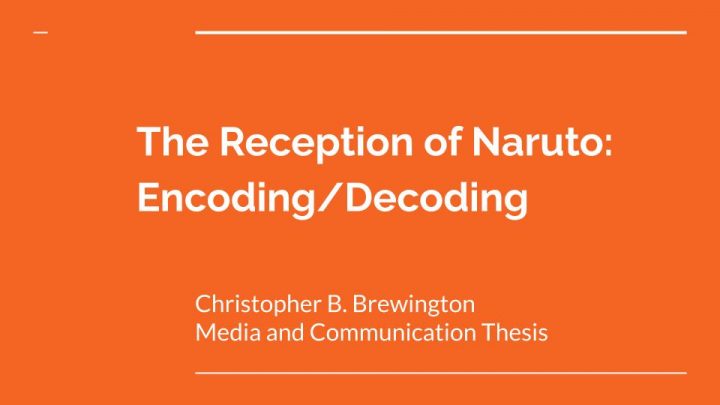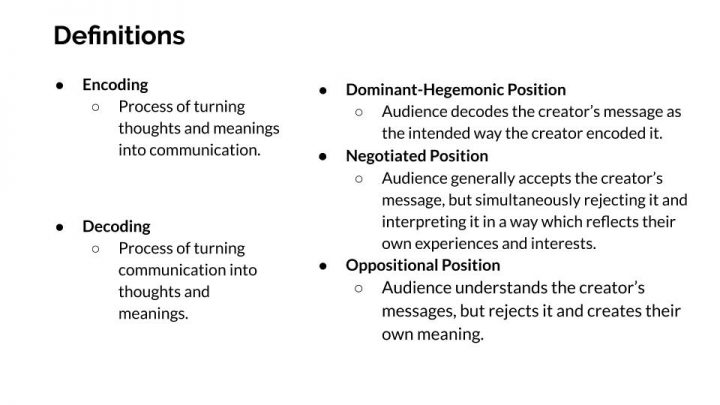
“Sometimes life hits you in the head with a brick. Don’t lose faith.” -Steve Jobs
Reception Theory
Reception theory asserts that media texts or works are encoded and decoded. The creators encode messages and values into their work, which are then decoded by the audience that consumes their media. However, the decoding varies from one audience member to another. The viewer can decode the media in ways that were not initially intended by the creator. Stuart Hall states that audience members adopt one of the following three positions when they decode the encoded; Dominant-Hegemonic position, Negotiated Position, or Oppositional Position. With this rationale, the creator of a piece of text or work can encode specific meanings or messages for the audience to decode. Using Hall’s method of analysis, it can help interpret (decode) the potential themes, values, and reasons why successful manga franchise, Naruto, became so popular with a range of audiences with different ages, races, classes, gender, and life upbringings and experiences.





